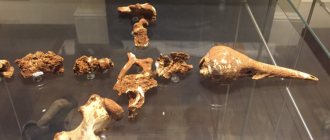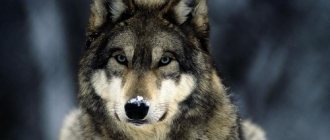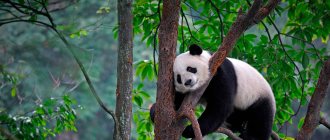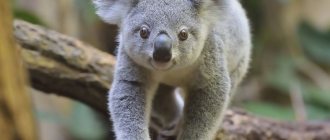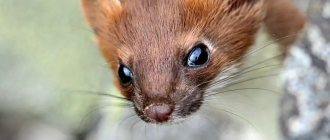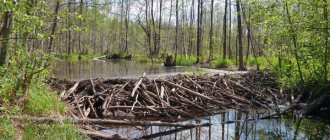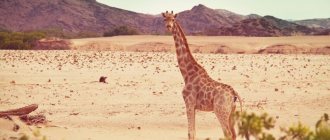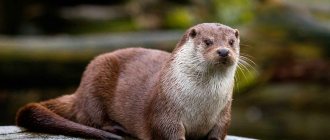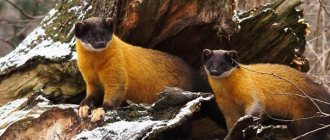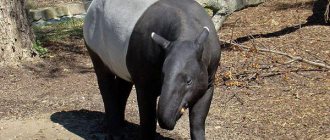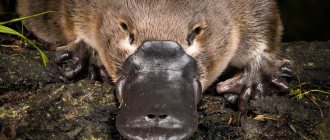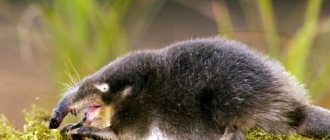Origin of the species and description
Photo: Musk deer
Europeans first learned about this ungulate from the descriptions of Marco Polo; he called it a gazelle. Then, three centuries later, the Russian envoy to China Siaphanius mentioned it in his letter as a small antlerless deer, and the Chinese themselves called it a musk deer. Thomas Bell classified this ruminant as a goat. Afanasy Nikitin also wrote in his book about the Indian musk deer, but as a domesticated species.
Musk deer, previously, until hunting and human economic activity affected its distribution area, was found from the northern regions of Yakutia, subpolar Chukotka to the southern regions of Southeast Asia. In Japan, this species is now exterminated, but remains were found there in the Lower Pliocene region. In Altai, artiodactyls were found in the late Pliocene, in the south of Primorye - in the late Pleistocene.
Video: Musk deer
There are descriptions that, until 1980, made it possible to distinguish 10 subspecies, but insignificant differences served as a reason for combining them into one species. There are differences in size and color shades. They are distinguished from deer not only by a different body structure, but also by the absence of horns.
Musk, from which the musk deer gets its Latin name Moschus moschiferus, is found in gland. In one male, the amount of stream, as it is also called, is 10-20 g. The content of the composition is complex: it is wax, aroma compounds, esters.
The characteristic odor of the stream depends on the macrocyclic ketone muscone. Records of musk date back to the fourth century, it was used by Serapino and Ibn Sina, and it was also used as a medicinal agent in Tibetan medicine. In Iran they were used in amulets and in the construction of mosques. Musk is considered a powerful potency enhancer.
Musk
Today, musk deer are more prized for their musk, a thick, strong-smelling brown substance secreted by a musk gland located on the male's belly. This is the most expensive animal product. And one gland of an adult male contains up to 20 g of the mentioned secretion.
Musk deer musk is used in alternative medicine in some eastern countries, but it is more widespread in Europe as an odor fixative (in the perfume industry).
Appearance and features
Photo: Musk deer animal
The silhouette of musk deer is light, elegant, but with a more massive rear part of the body. This impression is enhanced by the muscular hind legs, which are longer than the front ones. The short forelimbs have a narrow chest. The ruminant's back is curved and higher at the rear. The middle toes are equipped with long narrow hooves, the side hooves are placed low, almost the same size as the middle ones, and the standing animal rests on them. Side hoof prints are visible on the tracks. The dimensions of an adult are 16 kg, length from 85 cm to 100 cm. Height at the rump up to 80 cm, at the withers – 55-68 cm.
The characteristic hunched general appearance of the mammal is given by its low, short neck, which is crowned by a small, graceful, oblong head. The long, movable ears are rounded at the ends, and the eyes are large. The area around the black nostrils is bare. Males have long saber-shaped sharp fangs up to 10 cm long. They are shorter in females and therefore almost invisible. The small tail is also not visible, covered with sparse hair; in young males and females it is thin, while in adults it is flat and thick, but devoid of hair.
The hairline is coarse and long, slightly wavy. In the area of the rump, the hairs reach a length of almost 10 cm. They are shorter on the withers (6.5 cm), even smaller on the sides and abdomen, and the shortest on the neck and head. The hairs are brittle and uneven in color: light at the base, then gray with a brown tint, then this color turns brown, and the tip is almost black. Some of them have a red marking. The animal sheds once a year, gradually losing some of the old hair and replacing it with new hair.
In winter, the animal is dark brown in color, lighter on the sides and chest. There are ocher-yellow spots along the sides and back, sometimes merging into stripes. On the dark brown neck there is also a light brown stripe, which sometimes breaks up into spots.
The ears and head are gray-brown, the hair inside the ears is gray, and the ends are black. A wide white stripe with an elongated brown spot in the center runs down the underside of the neck. The inside of the legs are greyish.
Characteristics
Skull
It is primarily nocturnal and migrates only short distances. Prefers altitudes above 2600 m. Adults are small, weighing 7–17 kg.
The Siberian musk deer is classified as vulnerable. IUCN. It is hunted for its musk, which sells for up to $45,000 per kilogram. Only a few tens of grams can be extracted from an adult male. It is possible to remove the gland without killing the deer, but this is rarely done. In 2016, the Korean company Sooam Biotech was reported to be attempting to clone the Siberian musk deer to help conserve the species.[7]
The most striking characteristics of the Siberian musk deer are its tusks and kangaroo-like snout. Males grow teeth for display instead of horns.[8][9]
A separate subspecies roams Sakhalin Island.
Where does the musk deer live?
Photo: Siberian musk deer
The artiodactyl is found from the northern border of East Asia, to the south of China, excluding densely populated areas, in the Himalayas, Burma, in Mongolia from the north to the southeast, to Ulaanbaatar.
In Russia it is found:
- in the south of Siberia;
- in Altai;
- in the Far East (except for the northeast);
- on Sakhalin;
- in Kamchatka.
All these territories are occupied unevenly; there are places where this animal does not exist at all; much depends on the terrain, vegetation, proximity to housing and dense population. This mammal loves to settle in mountain coniferous forests, where spruce, fir, cedar, pine and larch grow. Most often, these are places where there are mountain outcrops, where ruminants can escape from predators along the edges of rocky cliffs. Even in sparse forests they prefer rocky areas. During the day, they even stop at small rocky blocks to rest. They live on steep (30-45°) slopes of the Barguzin Mountains.
The further south the range, the higher this ungulate rises into the mountains. In Tibet and the Himalayas, this is a belt 3-3.5 thousand meters above sea level. m., in Mongolia and Kazakhstan - 1.3 thousand m., Sakhalin, Sikhote-Alin - 600-700 m. In Yakutia, the animal settles in forests along river valleys. In addition to the taiga, it can wander into mountain bushes and subalpine meadows.
Range, habitats
The most famous of all modern musk deer, the Siberian musk deer, lives over a wide range: in Eastern Siberia, in the eastern Himalayas, as well as in Sakhalin and Korea. At the same time, she prefers to settle in mountain, mainly coniferous, forests, where it would be difficult for predatory animals or people to reach her.
Important! Due to the fact that the musk deer is a shy and very cautious animal, it tries to stay in places that are difficult for humans to reach: in thickets of bushes, in dense fir or spruce mountain forests, as well as on steep hills.
As a rule, it adheres to the border of 600-900 meters above sea level, although sometimes it can rise into the mountains up to 1600 meters. But in the Himalayas and Tibet it can also climb cliffs located 3000 meters above sea level. If necessary, he can climb such steep mountain cliffs that people could only climb using climbing equipment.
What does musk deer eat?
Photo: Musk deer Red Book
The majority of the ungulate's diet consists of woody lichens. These plants of the Parmeliaceae family are epiphytes. They attach themselves to other plant organisms, but are not parasites, and receive nutrition through photosynthesis. Some of the lichens grow on dead wood. In percentage terms, epiphytes make up about 70% of the total volume of artiodactyl food. In summer, the animal visits watering holes, and in winter it gets enough snow, which gets in while eating lichens.
In summer, the volume of lichens in the diet decreases due to the transition to the leaf mass of oak, birch, maple, bird cherry, rowan, rhododendron, rose hips, spirea, and lingonberries. In total, the musk deer’s diet includes up to 150 different plants. Musk deer eat grass. Their composition varies slightly depending on the presence of plants in animal habitats, these are:
- burnet;
- aconite;
- fireweed;
- stone berry;
- grass grass;
- geranium;
- buckwheat;
- umbrella;
- cereals;
- horsetails;
- sedges
The menu includes yew and fir needles, as well as the young growth of these plants. These ungulates consume mushrooms, both cap mushrooms and wood mushrooms. They bite off and chew woody species gradually, but often eat them in the form of mycorrhiza along with rotting pieces of wood. Also part of the diet is litter: dry leaves (from some tree species, for example, oak, they fall off gradually throughout the winter), seeds, rags. The litter is abundant in the first half of winter, when a strong wind knocks down small branches, and some of them break from the snow. Musk deer can graze for a long time near fallen trees, eating lichens and pine needles.
Nutrition
The diet of this animal consists mainly of lichens located under trees. Thanks to its agility, the musk deer can climb a tree and even jump from branches. The warm period of time is characterized by diversity in nutrition. The diet includes cedar and fir needles, blueberries, horsetails and ferns.
Musk deer are distinguished by their thrifty attitude towards lichens. Even in its own area, in times of famine, it carefully eats the remains of lichens, leaving some of them so that they can germinate.
Female musk deer
Features of character and lifestyle
Photo: Musk deer
The artiodactyl, due to its small growth, does not tolerate regions with snowy winters; in such seasons it migrates to places where the cover is below 50 cm. But if there is a food supply, then the end of winter, when the snow layer is high, the musk deer can survive calmly. Its light weight allows it not to fall through, and in the second half of winter, with rare snowfalls, it tramples a whole network of trails.
In the deep layer it moves in jumps of 6-7 meters. At this time, you can see beds in the snow, which the animal uses repeatedly. In winter, it often rests in tunnels formed by wapiti or wild boars, grazing there, picking up mosses, lichens, and litter.
In summer, the mammal is more attached to streams and forest rivers, where they rest. Where there are no bodies of water, they descend into ravines or to the foot of the slopes. During the day, the artiodactyl has several changes in activity. They can graze during midday, although they are more active at dusk and at night. In winter or in cloudy weather, they often feed during the daytime.
The structure of the animal contributes to its characteristic movement during grazing: it walks with its head low, collecting scraps of lichen and litter. This position allows him to see objects both above and below his head, thanks to the peculiar arrangement of his eyes.
The mammal approaches the snow mounds, detecting the presence of food by smell, and digs out the snow with its front legs or muzzle. The ruminant has good hearing; if a tree falls somewhere, then soon a musk deer will appear there. She often stands on her hind legs, resting her front legs on trunks, branches, or without support. This stand allows you to get food from higher tiers. Along inclined trunks or thick branches, artiodactyls can rise from two to five meters above the ground.
Conservation Actions
The Siberian musk deer is considered vulnerable but is gradually becoming less dangerous. In Russia, musk deer are protected as very rare under Section 7.1 of the Mongolian Wildlife Law (2000)
and also under the 1995
Mongolia Hunting Law
.[3] Musk deer are also protected in national parks, which make up approximately 13% of the Siberian musk deer population.
Internationally, musk trade is controlled through CITES. All muskie transactions are subject to strict regulation to avoid exploitation of deer for survival.[12]
Social structure and reproduction
Photo: Sakhalin musk deer
The mammal is solitary in nature. They pair up only during the rut. It grazes constantly on one territory, covering an area of up to 300 hectares. At the same time, artiodactyls are part of a small family group of 5-15 individuals. Such groups are called demes, in which individuals interact internally by marking areas by adult males.
They have secretion ducts along the upper part of the tail with a specific odor. The glands themselves are located on the belly; this smell helps to mark the territory. Males guard their territory, driving out intruders. They also communicate using sounds. For example, they use a long, hissing sound to signal danger. We can talk about plaintive sounds as a signal of fear.
The rut in mammals begins at the end of November and lasts a month. At this time they are very mobile and active. During this period, the secretion of musk secretion intensifies, the male marks the plants with it, this is a conventional sign for the females. Their body responds - estrus begins. This is how nature combines reproductive periods in time.
Where traces of animals were occasionally found, trails appear during the rut. Couples also jump after each other in large leaps. In nature, there is an approximately equal sex ratio; they form pairs within one permanent group, but if another contender appears, then fights occur between the males. They hit each other with their front hooves and use their fangs as weapons. In such places, traces of blood and tufts of fur remain.
Young people take part in the race from the second year of life. Within two days, the male can cover the musk deer up to six times. If there are not enough males, then one can have several partners. Gestation lasts 180-195 days. Babies weighing 400 g appear in June, usually one at a time, less often two. Calving occurs within half an hour, in a lying position.
Then, also lying down, the female feeds the calf. In newborns, the hair is soft and short, dark with yellowish spots, which sometimes form stripes. There is a light spot under the reddish ears, and two red spots on the neck. The throat, belly and inner thighs are light, with a grayish or yellowish tint.
The female first feeds the calves twice a day, and then once, the feeding time lasts up to five months. In the first two months, the cub gains about 5 kg. For the first three weeks, the babies hide, and a little later they follow their mother to safe places in the sludge. From October, young people begin walking on their own.
Humane Arabs
In the 50s of the last century, farms began to appear in Saudi Arabia where animals were raised and musk was obtained without injuring them.
How did they do it?
- Bait, such as grain, was placed in a stationary trap box.
- When the animal entered the box, its door slammed shut
- Then the captured animal was moved to an immobilization block, which had a special design that immobilized the animal.
- In this block, the male was anesthetized by injection for 40 minutes.
- While the animal was sleeping, a silver spatula was inserted into the bag, along the groove of which the secretion flowed out.
- After the musk was removed, the musk deer remained in a special box for another 4-5 hours until motor activity was completely restored.
Natural enemies of musk deer
Photo: Musk deer in Russia
Wolves used to pose a great danger to small ungulates. Now the number of gray predators has decreased, as a result of their targeted destruction; they prefer deer or weakened elk as hunting objects.
Among the enemies, the primacy belongs to the wolverine and the lynx. The wolverine watches and then pursues the prey, driving it from slopes with little snow into hollows with deep, loose snow. Having driven the artiodactyl, the wolverine crushes it. Where the number of ruminants increases, the number of wolverines also increases, which indicates their mutual natural trophic relationship
The lynx is a dangerous enemy of the saber-toothed animal; it guards it on a tree in places of constant movement, and then attacks from above. Young individuals are hunted by foxes, bears, and less commonly sable. The enemies of ruminants are also harza and tigers. Kharza is always very successful in rounding up this mammal, mainly females and young individuals.
Often the habitat zones of harza and musk deer do not coincide. In search of prey, predators group in groups of three and move to the mountains. After they scare off the prey, they chase it over long distances, driving it into the valley from mountainous areas. Having finished the ungulate, the kharzas immediately eat it.
Birds attack cubs and young people:
- golden eagles;
- hawks;
- eagle owls;
- tawny owl;
- eagles.
The musk deer has few food competitors, including deer, which eat lichens in winter. But this competitor is conditional, since they eat large bunches of lichen. And small ungulates find and bite it on the branches that the deer break off. More harm is caused by pikas, which in summer eat the same grasses as ruminants, and there are not so many of them in the dark coniferous taiga.
In nurseries, the animal’s life expectancy is 10 years, but in the natural environment, where, in addition to predators, it is also destroyed by humans, musk deer rarely lives for more than three years. Midges and mites cause her great trouble.
Lifestyle
Musk deer feed on lichens, tree bark, pine needles, leaves, buds and plants.
Musk deer is a solitary animal. It is rare to see a flock of these deer consisting of 3-4 individuals. The main danger for them is the harza (predatory marten). They are also afraid of being persecuted by lynx, wolverine, fox, wolf, bear and sable.
The musk deer is unable to run away from its pursuer for a long time, therefore, like a hare, it confuses its tracks and hurries to some steep slope where predators cannot reach. There she can sit for a long time, waiting out danger.
These creatures have one amazing feature: they are able, even at high speed, to change the direction of movement by 90 degrees or stop and stand motionless without making a sound.
Population and species status
Photo: Musk deer
The widespread use of musk in medicine since ancient times has led to the mass destruction of musk deer in their permanent habitats. The animal has long been exterminated in China for the sake of gland production. It is known that in Russia the extraction of ungulates began in the 13th century. Since the 18th century, the dried stream has been sold to China.
At first, hunters were paid 8 rubles per pound. By the beginning of the 19th century, the price increased to 500 rubles, and annual production by the middle of the century amounted to 80 thousand heads. In 1881, 15 rubles were given for one iron. gold, but only 50 of them were mined that year. Under Soviet rule, this animal was killed along the way when hunting fur-bearing animals. Due to such barbaric destruction, its population decreased in the 80s of the last century to 170 thousand specimens. By the early 2000s in Russia it had decreased to 40 thousand heads.
The uneven distribution across the range of mammals, found in groups in certain areas, is largely due to environmental activities. In areas of a thousand hectares they can be found with up to 80 heads, for example in the Altai Nature Reserve. Where there was constant and active hunting for musk deer, its number in the usual habitat zones was no more than 10 individuals per the same area.
In China, the secretion produced by musk deer is included in two hundred medicines. And in Europe it is added to perfumes. Nowadays, its synthetic substitute is often used in perfume, but many famous perfumes contain it in its natural form, for example, Chanel No. 5, Madame Rocher.
About 70% of the entire population is concentrated in the southern regions of its distribution range. Intensive human activity in destroying forests has reduced the number of animals in Nepal and India to ¼, where it now amounts to about 30 thousand animals. In China, this ungulate is under strict protection, but even there its population is declining and numbers about 100 thousand.
In Altai, by the end of the 80s of the last century, there were about 30 thousand specimens, after 20 years the number decreased by more than 6 times, this became the reason for the inclusion of the animal in the Red Data Book of Altai as a species that is reducing its number and range. The Sakhalin population is classified as protected; the Verkhoyansk and Far Eastern populations are at critical levels. The most widespread Siberian subspecies has almost disappeared in recent years. This mammal is included in the International Red Book as a vulnerable species.
Interesting Facts
And finally, we will share with you some interesting facts about this amazing animal.
- Musk deer translated from Latin means “bearing musk.”
- Males need the musk gland to attract females for mating. During the rut (mating period), males leave “odorous” marks everywhere, intoxicating the female with aroma. The “intoxicated” female quickly finds, using this landmark, the place where the male musk deer lives. It’s not for nothing that one well-known perfume brand, with an emphasis on musk in its composition, is advertised with the words: “Notes of musk delight women.”
- Because of its fangs, the musk deer has long been considered a vampire that drinks the blood of other animals.
- The animal's spine is very flexible. Musk deer can stand on their hind legs for a long time.
- Musk deer “practice” two types of married couples – conservative and archaic. A conservative union involves the mating of an adult male with a young female. An archaic family - a pair of young individuals - can persist throughout their entire life. Adults of the same age often conflict and fight, so their union is short-lived.
The amazing features of the musk deer do not make it invulnerable to predators. But the main danger for her is still people. We can only hope that someday people will understand that the life of an animal is much more valuable than a bottle of perfume, even the most elite one.
Lifestyle of the steppe fox
Steppe foxes live in abandoned burrows of marmots and badgers. The family usually shares a single burrow or an extensive system of tunnels.
The animals are not tied to one specific territory, but lead a nomadic lifestyle, traveling long distances in search of food. Sometimes in winter they migrate south: it is warmer here and there is more food.
The active life of the steppe fox most often begins at dusk and ends in the early morning. However, at times when there is little food or the cubs need to be fed, the animal can be active during the day.
Corsacs usually hunt alone, but some authors note that they can also hunt in small flocks. In severe frosts or bad weather (rain, thunderstorm), hunting is canceled. In this case, animals can sit in a hole for up to three days - the lack of provisions during this time does not bother predators.
Food and hunting
The steppe fox is omnivorous: it feeds on rodents, birds, reptiles, and insects.
When animal food is not enough for some reason, plant food can also be eaten. In winter, hunger sometimes forces foxes to approach populated areas and look for food in landfills or hunt poultry. Sometimes the animals manage to catch fish in drying lakes. They can survive for a long time on a very meager diet.
Due to the lack of water in their native habitat, they are adapted to extract moisture from the food they eat.
The steppe fox is extremely careful, and its excellent sense of smell helps it in this. Before leaving the hole, the animal sticks out its nose and sniffs the air. Then he sits down near the hole and raises his muzzle, catching suspicious odors from all sides. Only after making sure that nothing threatens him does he go in search of prey.
The steppe fox hunts slowly and silently. Having noticed a potential victim, she begins to sneak up on her, and when the opportunity arises, she instantly grabs her. If the need arises, he rushes after it. The predator can run about 15 km in a day.
As for people, corsacs sometimes allow you to approach them at a fairly close distance. It happens that the animal does not have time to escape and is caught up with, then it tries to pretend to be dead, and when the slightest opportunity to escape appears, the fox skillfully uses it.
What sounds does a corsac dog make?
Corsacs communicate with their own kind by barking. They warn about the potential danger of their family members with a high-pitched screech. In addition, depending on the situation, they whine, growl and yelp.
Family relationships, appearance of offspring
The mating season of steppe foxes is from January to March.
Young males compete for the attention of females, and fights often occur between them
These foxes are monogamous animals, and once paired, they live with their partner for the rest of their lives.
The gestation period lasts about one and a half to two months (about 50-75 days), so that the new generation is born in the first half of spring. There are usually 2-6 puppies in a litter (rarely 10). Newborns weigh about 60 grams with a body length of 10-15 cm. They are blind, their small body is covered with short light brown hair. Fox cubs spend the first few weeks of their lives in an underground den, feeding on their mother's milk. In total, milk feeding lasts about two months, but already at the age of one month the cubs begin to receive meat food. Caring for the offspring lies on the shoulders of both parents.
At approximately 1.5 months of age. The fox cubs begin to leave their den and get acquainted with the world around them. At 7 months, having reached the size of their parents, they leave their father's house and begin to establish an independent life. Steppe foxes reach sexual maturity at the age of 9-10 months and already at the age of one year they create their own families.
The lifespan of a corsac is not known exactly. But it is believed that in the wild these animals live no longer than 6-8 years. At the same time, if you keep a steppe fox in captivity and properly care for it, it can live for 12 years. By the way, this type of fox quickly gets used to humans and gets along well with them.
Recommendations
- Nyambayar, B.; Meeks, H., Tsytsulina, K. (2008). " Moschus moschiferus
".
IUCN Red List of Threatened Species
.
2008
. Retrieved March 29, 2009.CS1 maint: ref=harv (site link)Legacy form URL The database entry includes a brief rationale for why the species is vulnerable. - ^ a b
Fessenden, M. (2014).
“The fanged deer is not extinct, it still roams the mountains of Afghanistan.” smithsonianmag.com
. - ^ a b c
Nyambayar, B.;
Mix, H.; Tsytsulina K. (2015). "Moschus moschiferus (Siberian musk deer)". IUCN Red List of Threatened Species
.
2015
. Retrieved March 27, 2016. URL of old form - ^ a b c
Qi, W.-H., Li, J., Zhang, X.-Y., Wang, Z.-K., Li, X.-X., Yang, C.-Z., Fu , W. and Yue, B.-S. (2011) "Reproductive performance of female musk deer () in captivity", Theriogenology, 76(5), pp. 874–881. DOI: 10.1016/j.theriogenology.2011.04.018. - Maksimova D.A., Seredkin I.V., Zaitsev V.A., Mikel D.G. (2014). Research program for musk deer ecology in Sikhote-Alin. Advances in Life Sciences, 8(1), 65–71. DOI: 10.1016/j.als.2014.11.005
- Wang, W., Zhou, R., He, L., Liu, S., Zhou, J., Qi, L., Li, L. and Hu, D. (2015) “Progress in musk nutrition research. deer: implications for conservation,” Applied Animal Behavior Science, 172, pp. 1–8. DOI: 10.1016/j.applanim.2015.09.006
- Zastrow, Mark (February 8, 2016). "Inside a cloning factory that creates 500 new animals a day." New scientist. Retrieved February 23, 2016.
- National Geographic Channel. Wild Russia. Siberia. (2009)
- https://www.smithsonianmag.com/smart-news/fanged-deer-not-extinct-still-roaming-mountains-afghanistan-180953228/
- "Archival copy." Archived from the original on 2012-12-07. Retrieved 2013-06-16.CS1 maint: archived copy as title (site link)
- Musk deer (Moschus moschiferus): re-examination of the main lipid components of the secretion of the preputial glands. Sokolov V. E., Kagan M. Z., Vasilyeva V. S., Prikhodko V. I. and Zinkevich E. P., Journal of Chemical Ecology, January 1987, volume 13, issue 1, pages 71-83, Doi:10.1007/BF01020352
- Yang Q., Meng H., Xia L. and Feng Z. (2002) Conservation status and causes of decline in musk deer (Moschus spp.) in China. Available at: Archived Copy (PDF). Archived from the original (PDF) on 2016-05-06. Retrieved 2016-04-13.CS1 maint: archived copy as title (site link)
Beast in Captivity
However, with the advent of the hunting ban, the need for musk did not disappear. And so farmers tried to breed a species that could live in captivity. The first attempts were unsuccessful, as the musk deer died very quickly. But over time, it was still possible to develop a breed that lives according to human rules.
True, as the farmers themselves assure, caring for it is still a lot of work. In particular, a lot of trouble arises during the period when males are ready to mate. Nevertheless, this approach greatly helped wild musk deer by reducing the demand for their glands.
Current version as of 18:15, December 23, 2013
| Musk deer | |
| Squad: | artiodactyls |
| Family: | deer |
| Characteristic | |
| height at withers: | 70 cm |
| body length: | 100 cm |
| tail length: | 4-6 cm |
| weight: | 11-18 kg |
| trophy look: | Yes |
| Activity time | |
| Habitat | |
| Habitat: | Eastern Himalayas, Tibet, Eastern Siberia, Sakhalin, Korea |
| Habitats | |
| mountainous areas: | Yes |
| Application | |
| Hunting season |
